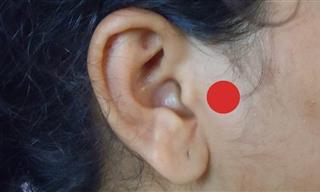Impressive new research led by scientists from UT Southwestern has discovered the earliest point in a neurodegenerative process that is thought to lead to dementia. The researchers have described their discovery like finding the “Big Bang” of Alzheimer’s disease, and they hope that their work leads to new treatments and ways to detect the disease before major symptoms occur.
Marc Diamond, a primary collaborator on this new study, says that “this is perhaps the biggest finding we have made to date, though it will likely be some time before any benefits materialize in the clinic. This changes much of how we think about the problem.”
Modern Alzheimer’s research usually concentrates on a specific protein called amyloid beta, and the clumping of that protein is suspected to be the primary pathological cause of the disease’s symptoms. However, after a long series of clinical trial failures in drugs designed to attack these amyloid beta plaques, some scientists are turning their attention elsewhere.
This new research focuses on a different protein that is called tau. These tau proteins have been found to form abnormal clumps in the brain, called neurofibrillary tangles, which accumulate and kill neurons. Some researchers have hypothesized that this is the primary cause of Alzheimer’s.
Until now, it was not known how, or when, these tau proteins began to accumulate into tangles in the brain. It was previously believed that isolated tau proteins didn’t have a distinctly harmful shape until they began to aggregate with other tau proteins, but this new research has shown that a toxic tau protein actually presents itself as misfolded, exposing parts that are usually folded inside, before it begins to aggregate. It’s these exposed parts of the protein that enable aggregation, forming the larger toxic tangles.
Diamond says that “we think of this as the ‘Big Bang’ of tau pathology. This is a way of peering to the very beginning of the disease process. It moves us back to a very discreet point where we see the appearance of the first molecular change that leads to neurodegeneration in Alzheimer’s.”
From here, the research is due to take two separate prospective pathways. One will first look at developing a simple diagnostic test to detect signs of this abnormal tau protein, either by taking a blood sample or a spinal fluid test. If these toxic tau proteins can be easily detected then doctors might just be able to diagnose Alzheimer’s before the major degenerative symptoms have taken hold.
The second research pathway involves investigating prospective drug treatments that could interrupt the tau aggregation process. The researchers point to a new drug called tafamidis as an example of a medicine that was designed to stabilize a protein that can clump and cause adverse symptoms.
Tafamidis was created to delay impairment to nerve function caused by the toxic accumulation of a normally harmless protein called transthyretin, and it’s currently approved for use in Europe and Japan. However, the FDA has called for further clinical proof before this drug is available for use in the US.
Now that this early alteration in the shape of tau molecules has been identified, researchers can focus on potential drug targets to inhibit the toxic accumulation at this stage.
“The hunt is on to build on this finding and make a treatment that blocks the neurodegeneration process where it begins. If it works, the incidence of Alzheimer’s disease could be substantially reduced,” says Diamond.
Source: newatlas
Images: depositphotos
 Go to BabaMail
Go to BabaMail






















































